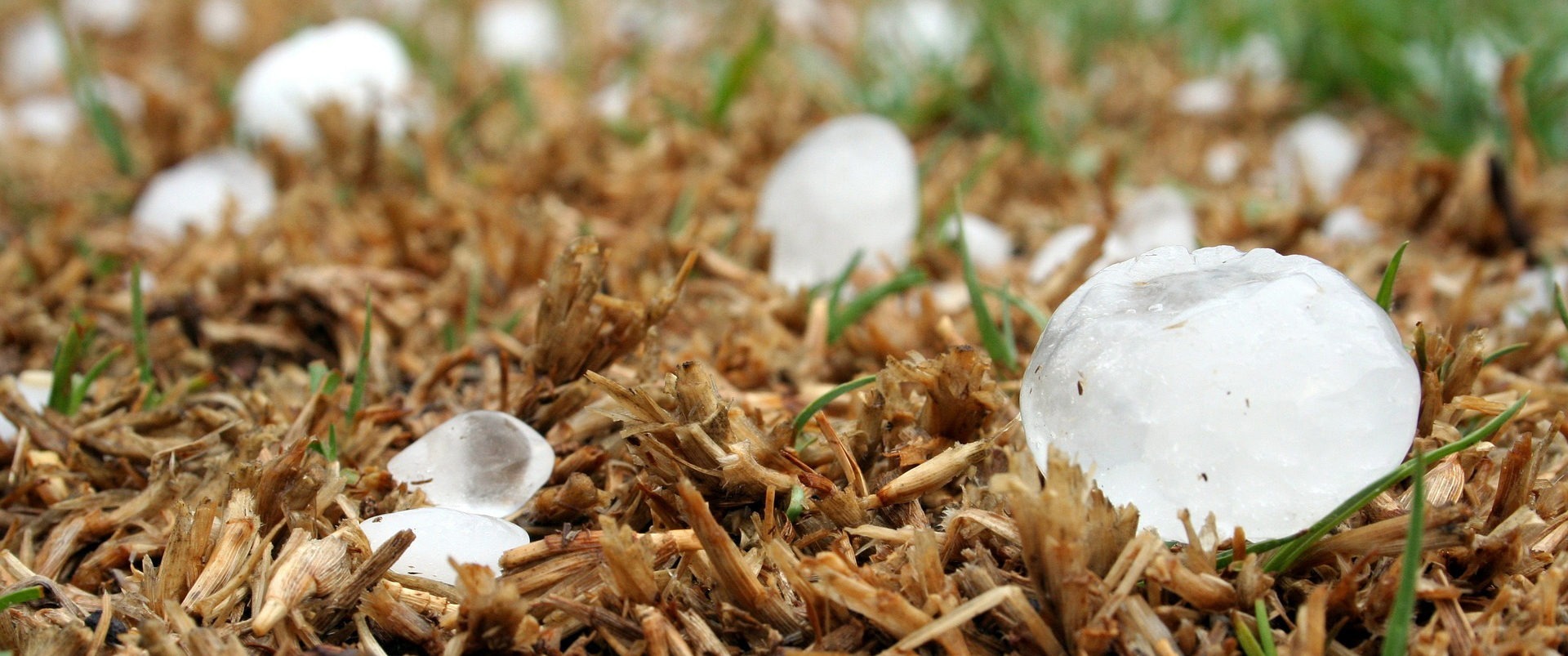Risk of Hail Damage

This blog cover when hail occurs, types of hail damage, and how to protect from it.
When Hail Storms Occur
Hail, also referred to as hailstones, are formed when raindrops are carried upward by updrafts created by thunderstorms. The rain then freezes when it reaches a cold enough area of the atmosphere. When the hail becomes heavy enough, it falls, making it clear that more powerful storms carry the potential of larger hail.
Hail storms have the potential to form during spring, summer, or fall months. You should also take note of sudden temperature drops. Cold fronts are a likely indicator that a hail storm or other form of severe weather could be forming. The largest piece of hail recorded in the United States had a diameter of 8 inches and weighed over a pound.
Hail Preparations
Number one is to make sure you’re insured! Either for business or personal, you could be taking on some serious expenses if you’re not covered. The next step in preparing for a storm is to inspect your roof. This is to ensure you have no damage and are able to make and repairs that are necessary. Take photos so you have a point of comparison for your insurance company in case you do suffer damages. If your home or business is in an area frequented by hailstorms, consider impact-resistant roof shingles, storm shutters, and exterior coverings.
Any property that could be damaged outdoors should be taken inside or covered, such as patio furniture or decorations. Weak or dead branches within falling range of property should also be removed. Hailstorms can very easily cause a branch to penetrate a roof or window.
When aiming to protect against vehicular damage, the best bet is to park your vehicle within a structure, such as a garage or a carport. However, when this is not available, many different products are offered such as car umbrellas, tarps, or inflatable cushions. Even a thick blanket would minimize impact damage if you don’t have much lying around.
Once the storm has passed, this is a good time to properly inspect electronics, check for gas leaks, and make note of any repairs or actions needed such as debris cleanup.
Hail Damage
Hailstorms lead to heavy property and crop destruction across the United States. Some of the most common claims from hailstorms are vehicle damages and roofing damages. Hail can cause serious dents, shatter windows, and cause water damages. Historical data should be evaluated to determine your risk for this, as it varies by location. Businesses in the Midwest and the Great Plains area of the US are at high risk; the top five states affected by hail include Texas, Kansas, Nebraska, South Dakota, and Colorado. Outside of the US, damaging hailstorms can be found in China Russia, India, and northern Italy.
In 2018, State Farm reported over $2.7 billion in damages due to wind and hail. Verisk Insurance Solutions reports that over 7.1 million properties in the US were affected by one or more damaging hail events, which resulted in losses totaling more than $13 billion.
Projections
Increased deductibles, reduced umbrella limits, and skyrocketing premiums are all a result of the hardening of the insurance marketplace. Ultimately, lenders have to decide if they find it more beneficial to help the borrower in allowing them to keep their premium costs stable by increasing deductibles and reducing umbrella limits, such that their debt service is not hampered by increased insurance costs; or to have the lower deductibles and higher umbrella limits in place, just in case of a catastrophic loss. Of course, these options have to be weighed based on the financial stability of the borrower.
Included in a report titled Insurance Marketplace Realities 2021, published by Willis Towers Watson, buyers can expect increases in all lines except kidnap and ransom, where exposures have abated because of pandemic-related travel restrictions.
Among the report’s predictions are the following increases in the insurance market place to account for rising costs and risk:
- Property rates for non-challenged occupancies will increase by 15% to 25% next year, up from 10% to 20% in the spring.
- General liability rates will increase 7.5% to 15%, from 2.5% to 7.5%.
- Umbrella/excess rates will increase from 30% for low/moderate hazard umbrella to 150% for high hazard excess.
- Workers compensation rate decreases are flattening, with slight increases in response to high severity/excess losses.
- Auto rates will increase by 8% to 15%, from 6% to 12%.
- D&O rates will increase by up to 70%
- Cyber insurance rates will increase by 10% to 30%, up from 10% to 15%.

